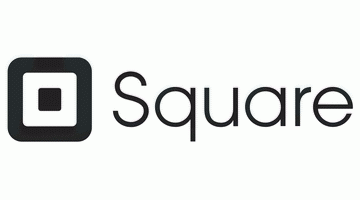Updated on January 18, 2022

Every business owner needs to understand the types and cost of payment processing which includes systems like interchange-plus pricing. Accepting credit card payments is no longer an option, but you already know this comes with a set of rules and costs you must adhere to. The interchange-plus pricing refers to a type of fee you would pay as a merchant to your payment processor or credit card payments vendor per transaction cost.
The interchange-plus pricing is considered one of the fairest, transparent balanced pricing models that would save you a lot of money. But then you need to understand the ins and outs of using it to figure out the best credit card processing pricing model that comes with the lowest processing rates suitable for your business model.
This guide will share with you every crucial detail about interchange-plus pricing, what does interchange pricing means, how do you calculate interchange plus, how does interchange-plus pricing compares to other pricing models, and lots more.
What Is The Interchange Plus Pricing Model?
The interchange-plus pricing is also called the cost-plus pricing or interchange pass-through pricing. The interchange pricing model comes with two components;
- The interchange fee is what the credit card issuing banks and the card networks (such as Visa, MasterCard, and Discover) charge the merchant account providers or payment processors. So this fee would vary from one card to the next and your payment processor cannot control these rates.
- The ‘plus’ or markup is set by the credit card processor (or your merchant service provider) itself. This cost comes in the form of transaction costs and a percentage fee.
So when your credit card processor (or merchant account provider) uses an interchange-plus pricing model it means you will pay the card issuer’s fee and a fixed markup from your payment processor.
Interchange plus pricing example
To further understand what your payments for credit card transactions would look like when using the interchange-plus pricing model, let’s look at a couple of scenarios.
First, it’s all about the interchange fee rate:
Naturally, there are hundreds of different card types and purchasing scenarios which means your interchange rate would vary from one transaction to the next. So, a swiped Visa debit card may have an interchange fee of 0.8% + 0.15 while a MasterCard world elite credit card may cost your business about 2.3% + $0.10 per transaction. The rule of thumb is that the more premium a card, the higher the interchange fee.
Then it’s about the true cost you pay for using the interchange-plus pricing model
For instance, the cost of a regulated debit card could be 0.05% plus a $0.21 transaction or item fee. If your interchange-plus rate is 0.30%, you’d be charged the total cost of 0.05% plus your rate of 0.30% = 0.35% plus the transaction cost of $0.21 plus the transaction fee markup from your payment processor.
Other factors that may influence your interchange fee
It’s important to realize that your interchange rates or fees aren’t fixed.
Many possible scenarios may also influence your interchange fee.
First, it’s about how the card was used. This means whether the card was swiped, tapped, or keyed in. Then there are other special circumstances called assessment fees. They include:
- Credit /debit assessment; your fee may depend on the size of the transaction and card volume. For instance MasterCard may charge you 0.12% + $0.0195/transaction on sales under $1,000 while Visa may charge 0.13% of credit card volume and $0.0195/transaction
- Whether or not you receive card processing international payments
- Whether or not the card is a member of a rewards program
- Kilobyte access fee
- Fixed acquirer network fee
- Digital enablement fee
- Annual location fee
- Card validation code fee
- Misuse of authorization fee
- AVS fee for card-present versus card, not present transactions
- Zero floor limit fee
- Fixed acquirer network fee
- Transaction integrity fee
- Processing integrity fee
- Settlement network assessment fees
These fees change your interchange fee by minute figure (e.g. $0.0044) and they don’t always apply in each circumstance. Plus, these fees don’t always apply depending on the card issuer network in question. Nevertheless, your credit card processor will not show these variations as they are charged and controlled by the card issuer networks. Beyond that, your interchange fees are updated twice per year in April and October.
Factors affecting your markup or interchange plus rate from credit card processors
Your credit card processor will actually display your interchange pricing as “interchange rate + X”. X is the markup that we explained earlier. The markup is what you compare across different processors using the interchange-plus pricing since this is the variation you will likely see.
Again your payment processor may also charge a different markup for different businesses. For instance, a high-risk business will pay a higher markup than other businesses. On average the cost of the interchange-plus pricing model would range from 0.05% to 2.95%.
How Does Interchange-Plus Pricing Compare To Other Payment Processing Models?
Generally, credit card processors offer three options concerning how they price transactions – interchange plus, fixed, and tiered pricing.
Interchange plus pricing vs tiered pricing
Tiered pricing is common for old-school processors. This pricing model breaks fees down into three primary tiers; qualified, mid-qualified, and non-qualified. It can range from as low as 1.4% to 4%+.
Transactions in the qualified region have lower fees while the transactions in the non-qualified category have the highest fees. So the nature of the transaction will determine the category. For instance, debit cards and non-reward credit card transactions will happen in the qualified region while transactions involving card-not-present, higher reward cards, and corporate cards may fall in the non-qualified group.
Because of the categorization, your business statement should be easier to read and understand. However, this isn’t worth much compared to how hard it is to figure out what you are really paying.
Generally, processors using the tiered pricing will only advertise the transaction fee for qualified categories in bold prints and they would look like you are getting to pay a low processing fee. But somewhere on the page, you will find a disclaimer that says, ‘for qualified purchases only’. Many of your transactions will fall in the mid-qualified and non-qualified tiers so the seemingly lower rates will only affect a small percentage of transactions you receive.
Tiered pricing also makes it hard to figure out what aspect of the processing charge goes to the card-issuer networks and how much goes to your payment processor. So in the end, you pay a higher-than-expected bill.
Interchange plus pricing vs. flat-rate pricing
Flat rate pricing is also called fixed-rate pricing or blended pricing. It is the easiest model to understand because you pay a fixed rate for every type of credit card transaction.
So your rates don’t change whether a customer uses credit, debit, or premium rewards cards. However, the way your business accepts the transaction would still influence the charge you pay. Card-not-present transactions (or keyed-in transactions) have a higher fee than swiped, dipped, or tapped payments. This particular trend is the same for the interchange-plus pricing since keyed-in transactions are still higher than swiped transactions. Transactions through an online store or virtual terminal invoicing are types of such keyed-in transactions.
The flat-rate pricing model is actually better than tiered pricing even if you may still end up paying more if most of your customers use debit cards.
This pricing model is usually great for merchants with lower volume (such as startups, new e-commerce businesses). A good example of a processor that uses this payment model is Square.
However, to incur the most savings, the interchange plus pricing is a better model. In reality, interchange plus pricing is cheaper than fixed-rate pricing and tiered pricing for businesses whose customers mostly use debit card payments. This is because interchange and assessment fees are usually lower on debit cards, whereas fixed-rate pricing would overcharge on those transactions.
The Fourth Type of Payment Processing Model – Membership Pricing
If you don’t like the traditional interchange-plus pricing model, you can also consider payment processors that charge membership fees instead of markups. A good example is Payment Depot. In this case, the markup or the plus component may appear as a flat membership fee every month. So your interchange fee to the issuing banks and credit card networks may still vary but the X portion otherwise called the markup will now be a fixed monthly fee instead of a percentage.
Depending on your retail business size and nature, you may incur lower overall costs with this rate pricing model than interchange-plus pricing.
Concluding Thoughts
There is no doubt accepting payments is no longer an option or a necessity. It is important to figure out that not all interchange-plus deals would feature the same fees. Your interchange plus pricing will not guarantee lower rates for every business type. This is especially an important factor for smaller businesses.
The payment processor may also charge additional fees such as surcharges, monthly PCI fees, and monthly statement fees which may not charge or depend on your business size. For instance, your provider may charge $99 per year for PCI compliance which doesn’t change whether you are a micro-business or a large corporation. So you also need to consider all of these fees alongside the features you gain for using that credit card payment processing solution. For instance, some credit card processors may offer additional tools, software, and integrations.
Nevertheless, the biggest advantage of using interchange plus pricing is that your credit card payment processing details will be entirely transparent. This is different from traditional tiered pricing systems that would hide the interchange costs thereby allowing processing companies to charge you a higher fee. It also brings on a lower markup than you would pay for using the flat-rate pricing model. Overall, the interchange-plus pricing model remains the best for lower overall credit card processing fees than any other pricing model.

